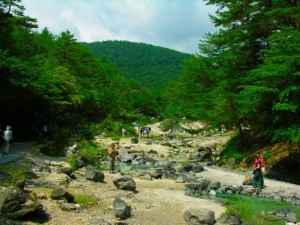
According to the “White Paper on Tourism in Japan, 2013” (“State of Tourism in FY 2012” and the “Tourism Policy in FY 2013”), the number of day trip domestic travelers was 243.00 million, an increase of 3.8% on a year-to-year basis, meanwhile the number of overnight domestic travelers was 178.76 million, an increase of 5.2% on a year-to-year basis, both slightly exceeding the figures before the Great East Japan Earthquake. In 2012, 3 Japanese LCCs launched service and also new tourist attractions opened- Tokyo Sky Tree and restored Tokyo Station to name a few. By the end of March 2013, 5.54 million visited the Sky Tree, 44.76 million if the visitors to the adjoining Tokyo Solamachi were added.
The number of Japanese travelers going overseas counted the record-high 18.49 million, an increase of 8.8% compared with the previous year. On a year-to-year basis, the number exceeded the previous year for 14 consecutive months until September, when the Japanese government acquired the Senkaku Islands and resulted in the decrease of travelers to China. Korea was the top among the destinations of those travelers: 3.519 million, an increase of 7.0% compared with the previous year. China dropped to the 2nd place: 3.518 million, a decrease of 3.8% compared with the previous year.
The total number of foreign guests in 2012 was 8.37 million, an increase of 34.6% on a year-to-year basis. This figure marking the 2nd high in the past indicates the recovery from the effect of the Great East Japan Earthquake. Although it did not reach the established target of 9.00 million guests, visitors from China, Thailand, Taiwan, Malaysia, Indonesia, India and Vietnam marked the record high. Among these countries and areas, Thailand ranked in 6th with 0.26 million guests, a 79.9% increase compared with the previous year. Multiple Entry Visa for temporary visitors implemented in 2012 is named as one of the factors which led to the large increase of visitors from Thailand, Malaysia and Indonesia.




